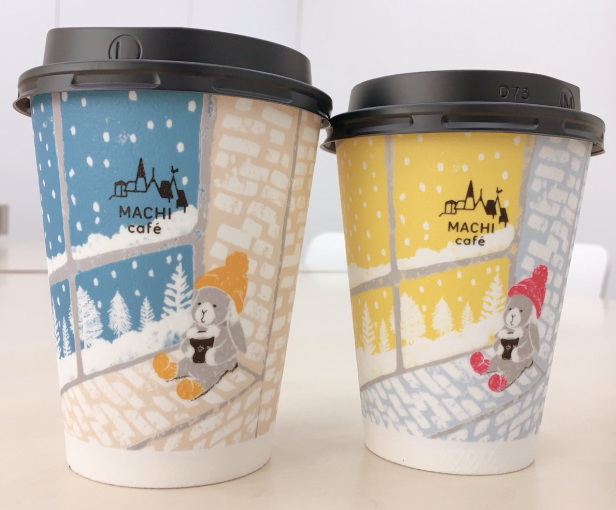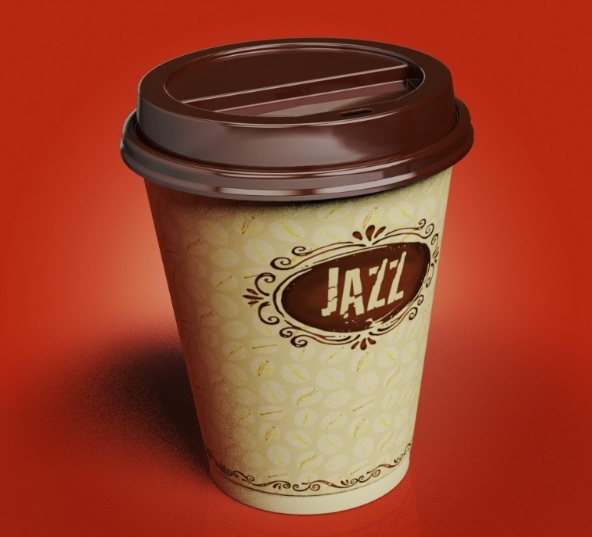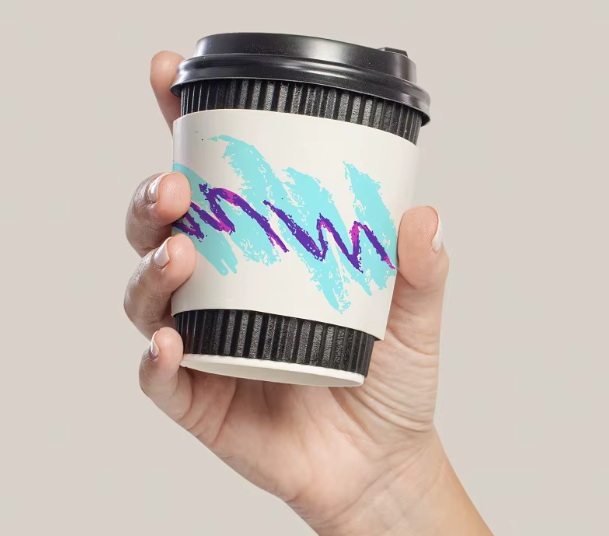
Content Menu
● Introduction to the Jazz Design
● Popularity and Cultural Impact
● Design Elements and Appeal
● Environmental Considerations
● Evolution of Paper Cups
● Impact on Modern Design
● Cultural Legacy
● Conclusion
● FAQ
>> 1. Who designed the Jazz cup?
>> 2. When was the Jazz design introduced?
>> 3. Why is the Jazz design so popular?
>> 4. Are blue and purple disposable cups still produced?
>> 5. What are some eco-friendly alternatives to traditional disposable cups?
● Citations:
The blue and purple disposable cups, commonly known as the "Jazz" design, have become an iconic symbol of the 1990s. These cups, featuring teal and purple brushstrokes, were first introduced by the Sweetheart Cup Company in 1992 and have since gained a cult following. But what makes them so popular, and why do they continue to captivate audiences today?

Introduction to the Jazz Design
The Jazz design was created by Gina Ekiss, a former designer at Sweetheart Cup Company, as part of an internal design contest in 1989. Ekiss's design was chosen for its simplicity and adaptability to the company's high-speed printing process, which required designs with only one or two colors. The design's simplicity allowed it to be printed quickly without worrying about the crispness of the image, making it ideal for mass production.
The Jazz design's origins were largely unknown until a group of enthusiasts on Reddit decided to track down the designer. Their efforts led to the discovery that Gina Ekiss was the creator behind this beloved design. Ekiss left the company in 2002, at which point she was informed that Jazz was the company's top-grossing stock design in history[1][2].
Popularity and Cultural Impact
The Jazz design became an instant hit, appearing not only on cups but also on plates and bowls. By 2002, it was Sweetheart's top-grossing design, and its popularity continued even after Solo Cup Company acquired Sweetheart in 2004. The design transcended its humble origins to become a cultural phenomenon, symbolizing the 1990s and inspiring a wide range of merchandise, from t-shirts to car decals[2][5].
The Jazz design's impact on pop culture is evident in its widespread use in various settings. It was often seen at field trips, slumber parties, and even in sitcoms. This ubiquitous presence helped cement its status as a nostalgic symbol of the era[2].
Design Elements and Appeal
The Jazz design's appeal lies in its simplicity and versatility. The teal and purple colors are vibrant and eye-catching, making the cups stand out in any setting. The design's abstract nature allows it to be interpreted in various ways, contributing to its broad appeal. Fans have described the design as visually pleasing, with its moderate use of white space and liberal strokes of blue and purple[5].
The design's simplicity also made it easy to print and reproduce, which was crucial for mass production. This simplicity allowed the design to be applied to various products beyond cups, further increasing its visibility and popularity[2].
Environmental Considerations
While the Jazz design remains popular, there is growing concern about the environmental impact of disposable cups. Many companies are now offering eco-friendly alternatives, such as compostable or recyclable cups, to reduce waste and promote sustainability. These alternatives are made from materials like PLA or bamboo, which are biodegradable and can significantly reduce environmental pollution compared to traditional plastic cups[3][4].
The shift towards eco-friendly cups reflects a broader trend in consumer behavior, where sustainability is becoming increasingly important. As consumers become more environmentally conscious, the demand for disposable cups that are both functional and sustainable is on the rise.

Evolution of Paper Cups
Paper cups have a long history, dating back to the early 20th century. The first paper cup was invented by Lawrence Luellen in 1908, who created a disposable cup made from waxed paper to provide a convenient way to drink coffee on the go[3]. Over the years, paper cups have evolved to meet changing consumer needs, with advancements in design and materials.
In the 1950s and 1960s, paper cups became more popular in Europe and spread globally. They were adopted by fast food restaurants and coffee shops as a convenient and hygienic solution for serving beverages[4]. Today, paper cups come in a variety of designs and materials, including eco-friendly options that aim to reduce environmental impact.
Impact on Modern Design
The Jazz design has influenced modern design trends, particularly in the realm of nostalgia-driven aesthetics. Its iconic status has inspired designers to revisit retro themes and incorporate them into contemporary designs. This trend is evident in fashion, home decor, and even automotive design, where vintage elements are often used to evoke a sense of nostalgia and familiarity[5].
Moreover, the Jazz design's simplicity and versatility have made it a model for creating designs that are both visually appealing and practical for mass production. This approach has been applied to various consumer products, from packaging to textiles, where simplicity and adaptability are key factors in design success.
Cultural Legacy
The Jazz design has become a meme and has gained a cult following. Fans have applied the design to various objects, including automobiles, shirts, and shoes. This widespread adoption reflects the design's ability to transcend its original purpose as a disposable cup design and become a cultural icon[8].
The design's cultural significance is also reflected in its ability to evoke nostalgia. For many, the Jazz design is a reminder of childhood memories and simpler times. This nostalgia factor contributes to its enduring popularity and ensures that it remains a beloved symbol of the 1990s.
Conclusion
The blue and purple disposable cups, with their iconic Jazz design, have become a beloved part of pop culture. Their enduring popularity stems from their unique design, cultural significance, and versatility. As consumers become more environmentally conscious, the future of disposable cups will likely involve more sustainable options, but the Jazz design will remain a nostalgic reminder of the past.

FAQ
1. Who designed the Jazz cup?
- The Jazz cup was designed by Gina Ekiss, a former employee of Sweetheart Cup Company, as part of an internal design contest in 1989.
2. When was the Jazz design introduced?
- The Jazz design was first introduced in 1992 on disposable cups by Sweetheart Cup Company.
3. Why is the Jazz design so popular?
- The Jazz design is popular due to its simplicity, versatility, and cultural significance as a symbol of the 1990s.
4. Are blue and purple disposable cups still produced?
- The original Jazz cups are no longer in production, but the design remains popular and is often featured on various merchandise.
5. What are some eco-friendly alternatives to traditional disposable cups?
- Eco-friendly alternatives include compostable cups made from materials like PLA or bamboo, which reduce environmental impact compared to traditional plastic cups.
Citations:
[1] https://www.smithsonianmag.com/smart-news/where-did-snazzy-jazz-design-paper-cups-come-180955779/
[2] https://webflow.com/blog/90s-jazz-design
[3] https://www.goforgreenuk.com/blog/the-history-of-paper-coffee-cups
[4] https://lygiayvietnam.vn/en/development-history-of-coffee-paper-cups-412.html
[5] https://99percentinvisible.org/article/jazz-cups-the-snazzy-paper-tableware-pattern-that-encapsulates-early-90s-design/
[6] https://www.reddit.com/r/90s/comments/zzig66/what_logo_is_this_i_think_its_90s_i_thought_it/
[7] https://www.mashedinplastic.co.uk/jazz-cup/
[8] https://en.wikipedia.org/wiki/Jazz_(design)

















